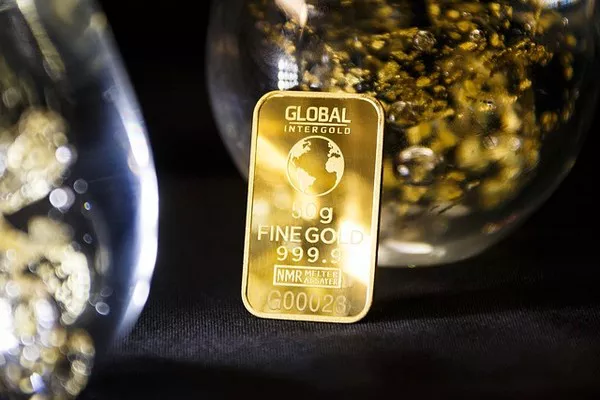Gold has long been considered a reliable store of value and a hedge against inflation. Historically, as inflation rates rise, so does the demand for gold. However, recent market trends have left many investors puzzled as to why gold prices have not surged in tandem with inflation. This article delves into the multifaceted factors influencing the dynamics between gold and inflation, exploring the complexities of this relationship.
The Traditional Role of Gold:
Traditionally, gold has been perceived as a safe haven asset, often sought by investors during times of economic uncertainty or inflationary pressures. The rationale behind this is rooted in the belief that gold retains its intrinsic value over time, acting as a safeguard against the eroding effects of inflation on fiat currencies. While this relationship has held true in the past, the contemporary market landscape has introduced several nuances that challenge the conventional wisdom.
Interest Rates and Opportunity Cost:
One key factor contributing to the perplexing behavior of gold in the face of inflation is the prevailing interest rate environment. When central banks raise interest rates to combat inflation, the opportunity cost of holding non-interest-bearing assets like gold increases. Investors may be enticed to shift their capital into interest-bearing instruments, such as government bonds, which become more attractive as yields rise.
In recent times, central banks in various regions have adopted a cautious approach to interest rate hikes, navigating a delicate balance between fostering economic growth and controlling inflation. This has resulted in a prolonged period of low interest rates, diminishing the opportunity cost associated with holding gold. Consequently, investors may opt for riskier, higher-yielding assets rather than parking their funds in gold.
Rise of Cryptocurrencies:
The emergence and proliferation of cryptocurrencies, particularly Bitcoin, have introduced a new player in the realm of alternative investments. Bitcoin, often referred to as “digital gold,” shares some characteristics with the precious metal, such as a finite supply and the absence of direct correlation with traditional financial markets. As a result, some investors have diverted their attention and funds towards cryptocurrencies, viewing them as a modern alternative to gold.
The digital nature of cryptocurrencies and the appeal to a younger generation of investors have positioned them as a viable store of value and a potential hedge against inflation. This shift in preference may be diverting capital away from traditional safe-haven assets like gold, contributing to the stagnation in its prices despite rising inflation.
Market Sentiment and Behavioral Factors:
Investor sentiment plays a crucial role in shaping market dynamics, and the gold market is no exception. In periods of economic uncertainty, investors may flock to gold, driving up its prices irrespective of inflation levels. Conversely, when markets exhibit confidence and risk appetite, the demand for gold may wane, impacting its performance in the face of inflation.
The recent waves of optimism surrounding economic recovery and the effectiveness of central bank policies may be influencing investor sentiment, mitigating the urgency to seek refuge in gold. Additionally, the ease of access to real-time information and trading platforms has accelerated market reactions, making investors more responsive to short-term trends and less inclined to adopt a long-term perspective, which is typically associated with gold investments.
Supply and Mining Dynamics:
Gold, as a physical commodity, is subject to the dynamics of supply and demand. While inflation tends to increase the demand for gold, the supply side of the equation has its own set of challenges. The process of gold mining is intricate and time-consuming, and it often takes years for new mining projects to come to fruition.
In recent years, environmental and regulatory constraints have further complicated the mining process, impacting the industry’s ability to rapidly respond to increased demand. This supply-side inertia may be contributing to the muted response of gold prices to inflationary pressures, as the market struggles to meet the growing demand in a timely manner.
See also Why Gold Is So Cheap In Dubai
Conclusion:
The relationship between gold and inflation is undergoing a paradigm shift, influenced by a confluence of factors that extend beyond the traditional economic models. The interplay of interest rates, the rise of alternative investments like cryptocurrencies, shifting investor sentiment, and supply constraints in the gold mining industry all contribute to the enigmatic behavior of gold in the current economic landscape.
While the historical correlation between gold and inflation remains relevant, investors must adapt their strategies to account for the evolving market dynamics. The resilience of gold as a store of value may prevail, but its performance in the face of inflation is increasingly nuanced, requiring a nuanced understanding of the multifaceted forces at play in today’s global economy.


